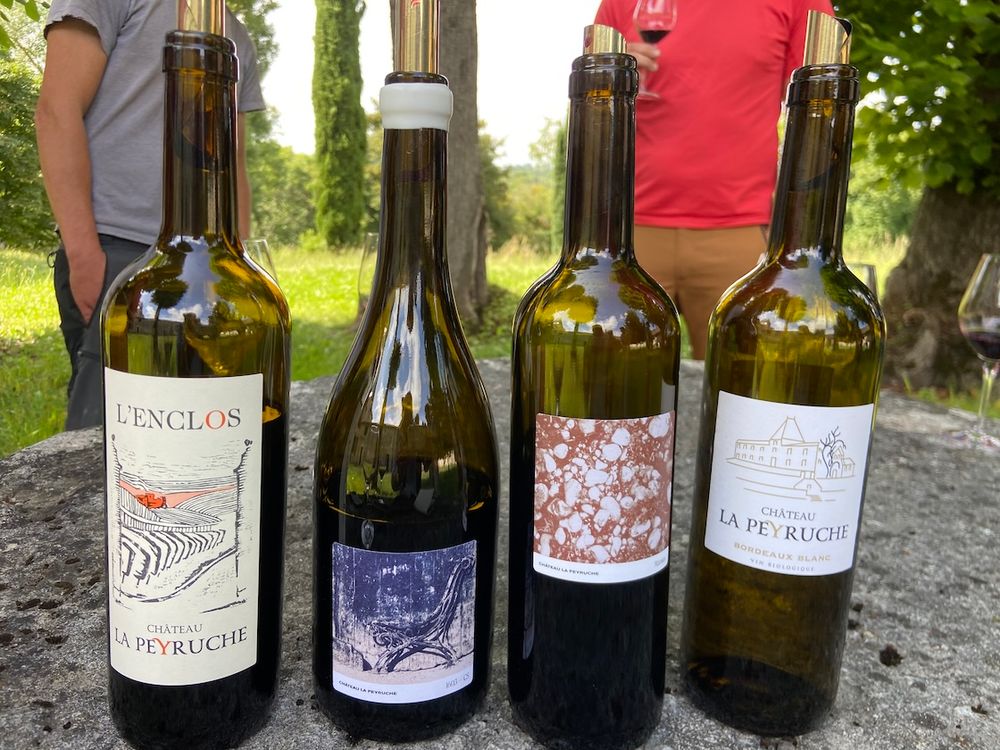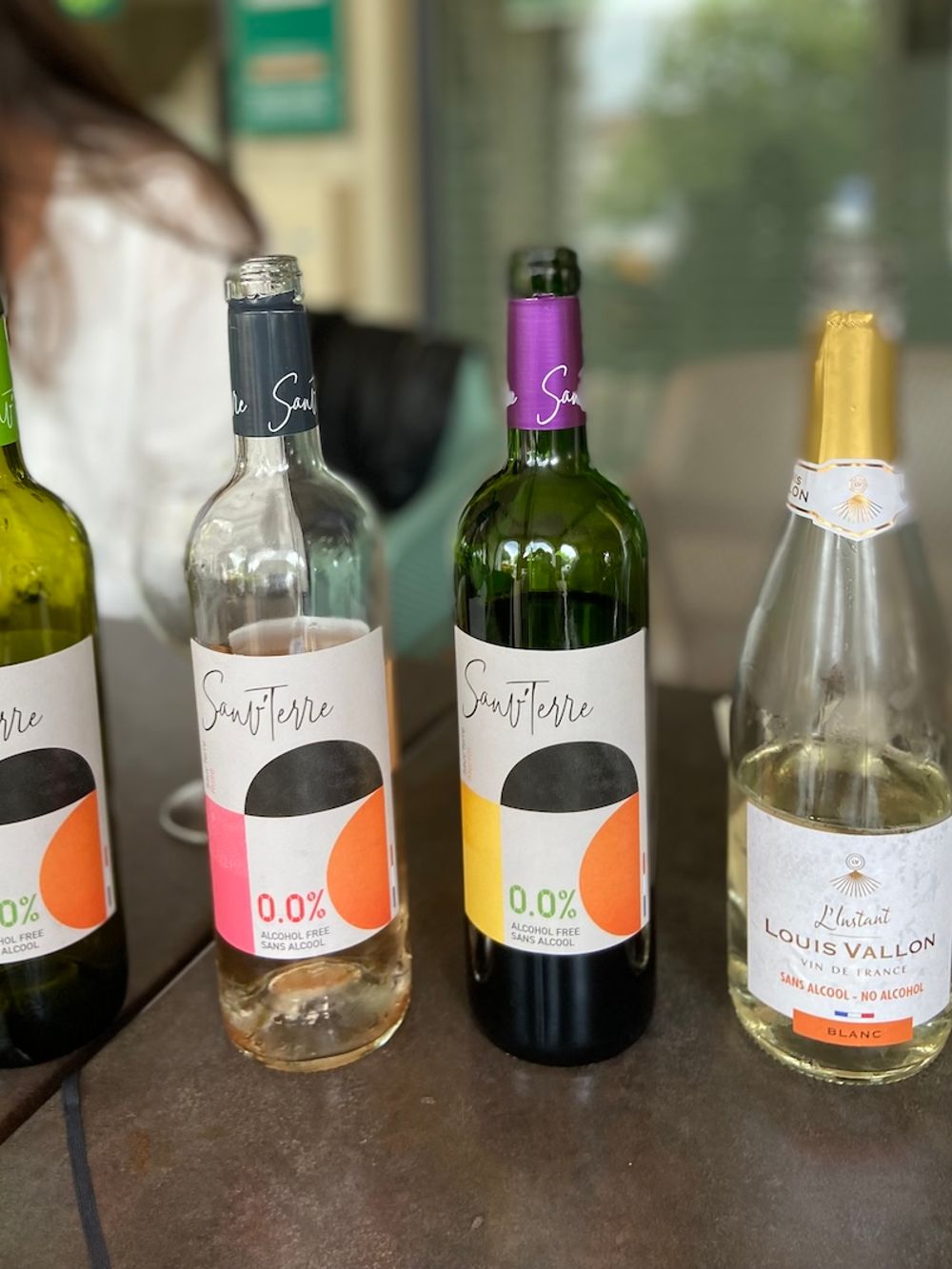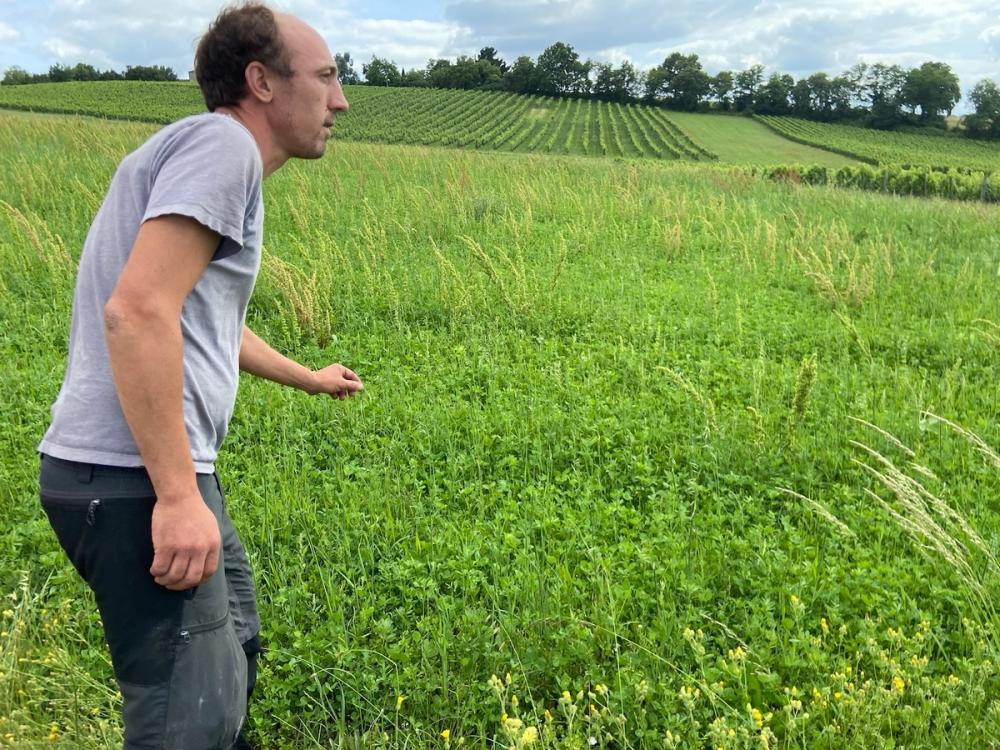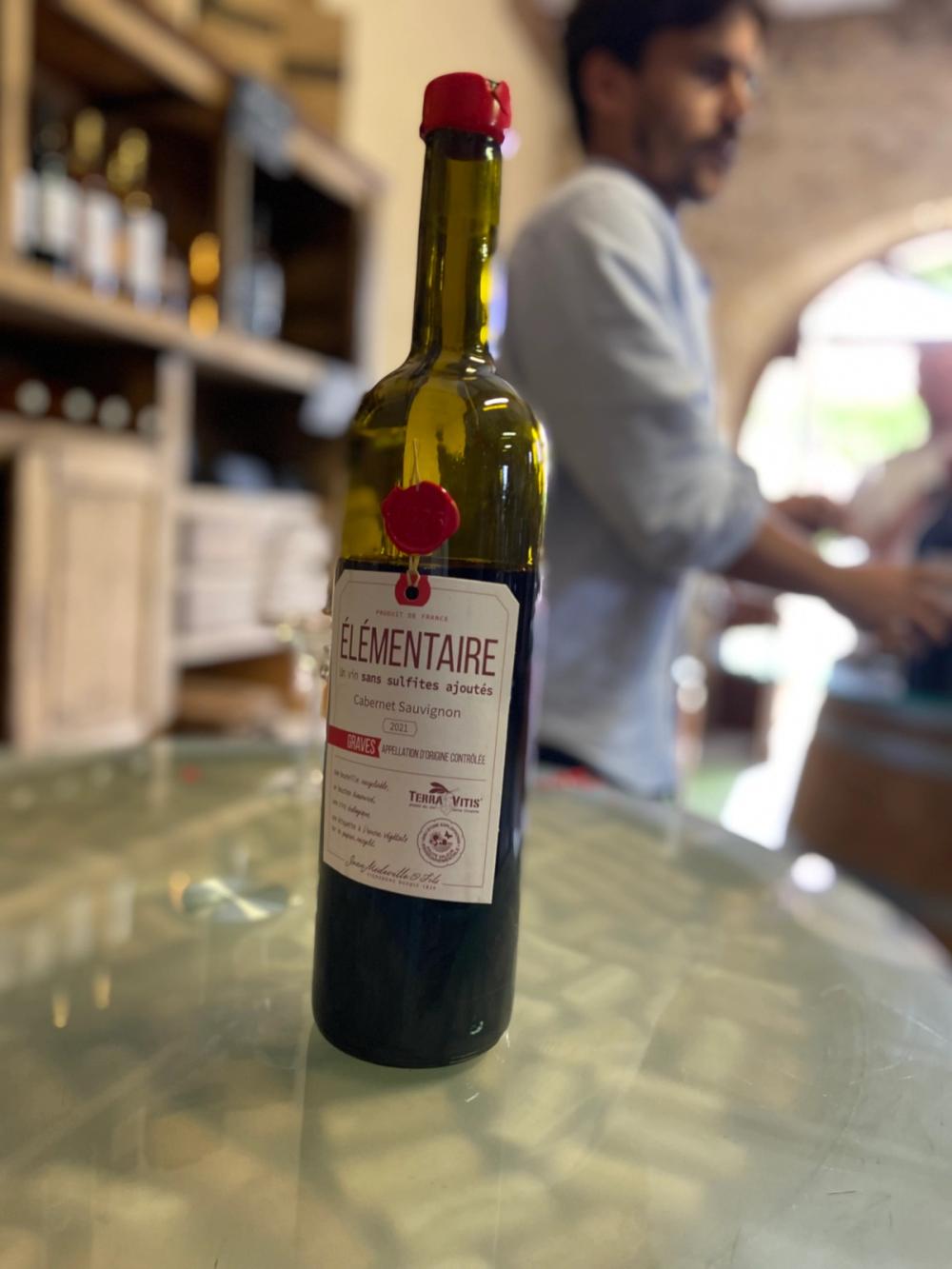Bordeaux is traditionally known for its Grand Cru Classé. But that represents just 4% of the region's wine-growing area and, arguably, the sheer prestige of the Bordeaux brand is a bit stifling. It spells exclusivity and excellence but certainly not approachability. That’s bad for younger drinkers and the increasing number of imbibers wanting to explore fresher, more informal styles.

Range of new, light reds at Château La Peyruche - vinification vessels, bottle shapes and overall look are all changing
Bordeaux is having to reinvent itself. The impact of nature loss and global warming is creating a real sense of urgency around innovation, a seriousness about sustainability and the need for more diversity of range.
The CIVB, Bordeaux’s Wine Council, has launched a new marketing campaign, its biggest in ten years. The tagline is Ensemble tous singuliers, which emphasises a together-through-diversity theme. In English promotional materials, they’ve gone for the punchier slogan, ‘Join the Bordeaux Crew’.
They invited us to get a new take on Bordeaux, a Bordeaux that is younger, less stuffy and ready to try things out. We are talking about mixologists blending Bordeaux wines into novel cocktails, more producers going biodynamic and ditching the staid traditional style of labels for something more - dare I say it – hip.
There are over 8,000 producers in the region. “Bordeaux isn’t all red, expensive and made to lay down,” comments the aptly named CIVB European marketing director, Caroline Vigneron. The promotional campaign focuses on the region’s diversity of wine styles, environmental sustainability, and its ‘great crew’ of winemakers and merchants.
Red wine still accounts for more than 80% of production but the balance is shifting. So The Buyer’s visit is a chance to sample a wide range of accessible and affordable wines from different Bordeaux areas.

Launching a new bio and vegan cuvée
The visit was timed to coincide with the vibrant annual Bordeaux Fête le Vin, a festival of wine which attracts over 40,000 visitors both locally and abroad. Mouton Cadet displayed its newest bio and vegan cuvée, a light fresh white and rosé with modern labels clearly designed with youthful summer drinking in mind. But the fête was also the showcase for many of the smaller growers in the region. Interestingly, the Crémant de Bordeaux on offer was en rupture (out of stock) by the end of festival, an illustration of how the trends of drinking in France are changing.
I met the region's first Crémant producer from the Bordeaux Families cooperative, a union of 300 winemakers. Its Blanc de Noirs Louis Vallon is on the shelves of UK supermarket Sainsbury’s. Bordeaux Families is also catching the tide of demand in no-lo wines and we tasted its refreshing 0:0 alcohol-free sparkling and Sauv’terre still wines.

Bordeaux goes No Lo
‘Traditionally it was red wine that was drunk with a meal but now people are turning to lighter and fresher options that can be drunk at any time of the day,’ comments Nathalie Escuredo from the Ecole du Vin de Bordeaux. Indeed, we enjoyed a cocktail-making class, showing how a concoction of white wine and tonic could be savoured. Not every winemaker approves of this departure from traditional wine-drinking but the Ecole du Vin stand at the fête was popular.
Climate change and its effects

Château Boutinet: a fondness for pushing Clairet
Climate change is playing a major part in pushing diversification in the way vines are grown and wine is produced.
“Traditional Merlot is particularly susceptible to mildew with recent wet winters and unpredictable hailstone storms. Some growers have endured a staggering 60% loss in yield,” says Escuredo, herself a vine grower under the name Château Boutinet. She has a particular fondness for producing Clairet (a dark-coloured rosé).
Many organic growers such as Médoc Château Paloumey are trying new blends and planting more varieties including Cabernet Franc and Petit Verdot. For instance, Château Paloumey’s vines are now 50% Cabernet Sauvignon, 44% Merlot, 3% Cabernet Franc, and 3% Petit Verdot.
“Nothing since 2017 is predictable anymore,” says Paloumey’s owner Pierre Cazeneuve, who is replanting some of his Merlot plots with Cabernet Sauvignon as mildew has begun to strike this year. He's a fierce advocate for biodiversity, encouraging more wildlife by planting trees around and in between the vines.
He's also experimenting in other ways. We tasted his light and fresh new 2023 Blanc de Noirs (67% Cabernet Sauvignon, 33% Merlot) – exactly the sort of approachable wine the region is now seeking.
Château La Dauphine in Fronsac highlights the new importance of agro-forestry - with gardens, trees and ponds to attract more wildlife.
“Not everyone likes spiders,” Lisa Sauniere, the château manager, laughed.“But for us monitoring their numbers means we have a healthy biodiversity in the vineyard.” And sheep are imported to keep the grass down. Many châteaux such as La Dauphine have gained the prized HVE (Haute Valeur Environmentale) sustainable certification. The region is aiming for all estates to be certified sustainable by 2030, up from 75% today.

Areas are being left wild to facilitate biodiversity
At Château La Peyruche, in Côtes de Bordeaux, areas are left wild, new fruit and nut trees have been planted, and bird boxes installed. There are even cameras and sonar monitors throughout the plots to measure the density and activity of birds and bats. We tasted its light reds with quirky arty labels. Even bottle shapes are no longer a given and, during production, amphoras are used as well as traditional barrels and tanks.
Overcoming barriers to innovation

Loosely-attached label gives off a different image of what Bordeaux should look like
Innovation is not always easy when there are intergenerational pressures to maintain the status quo. Clos Bourgelat wants to see sweet wine not just feature in the dessert section of wine menus but promoted as an aperitif, or with fish, chicken and cheese.
The eighth generation at Château Fayau in Cadillac adds new lines to its existing, extensive range and its Cabernet Sauvignon Elementaire aimed at city folk, sports a particularly eye-catching loosely attached label.
For some winemakers, passing estates on to the next generation is not possible - or the choice the younger generation wants to make. For them, there’s the highly-publicised grants scheme introduced last year for producers ‘grubbing up’ vines to cut wine surpluses. The deadline was recently extended to the end of July.

Jeunes Agriculteurs is a union that supports vine growers under the age of 40
Meanwhile, there’s the Jeunes Agriculteurs which supports wine growers and is the only agriculture union entirely dedicated to the cause of farmers under the age of 40. At the Saint-Émilion-based Château Pipeau we meet several young growers including Noémie Tanneau who was formerly a social worker. Like her peers she is one of a new breed of environmentally committed, small wine producers making artisanal wines from smallish plots. One of her Château St Ferdinand wines was chosen to give to environmentally-minded King Charles on his visit last year to France.
Global warming is a real catalyst for innovation. "Similar to Covid, which quickened the pace of new vaccine innovation, climate change is making us take sustainability very seriously – no one is just paying lip service to it," one grower commented.
Bordeaux is clearly at a turning point in terms of styles of wines, environmental sustainability and diversity of producers. As someone famously wrote, ‘If we want things to stay as they are, things will have to change.’
































